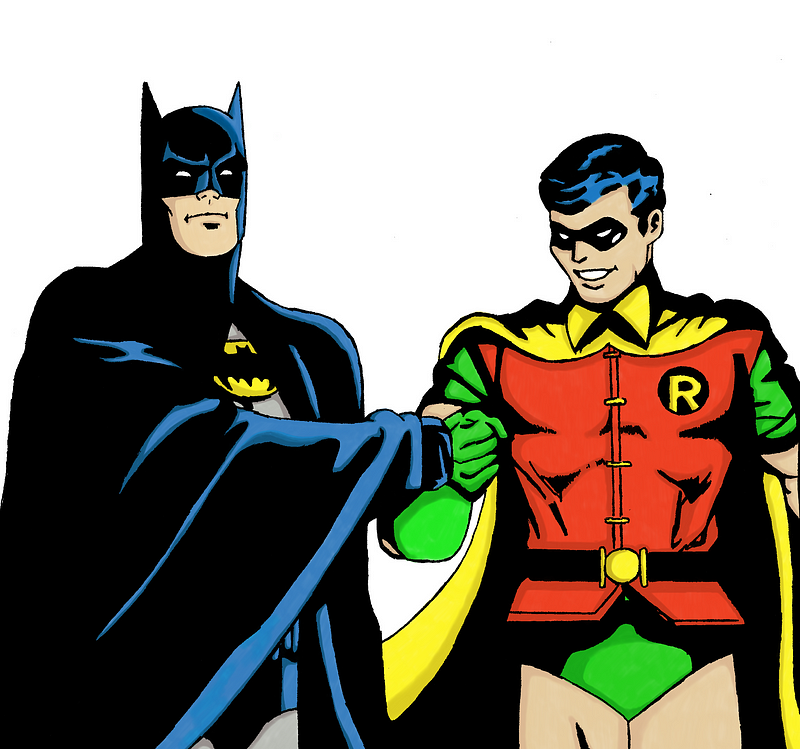Last Updated on August 31, 2023 by David
This is part one of our series on operationalizing customer success. Read part two here: Join Forces. Win Customers and Success.
Dynamic duos. Batman and Robin. Ren and Stimpy. Jerry and George. You’ve heard of these partnerships that create absolute magic and harmony. But even the best of duos often struggle to succeed as a result of illogical self interest, miscommunication, and poor leadership. For these duos, the struggles exist on a personal level — easily remedied by a brotherly hug and beer. For SaaS companies however, misalignment means poor team performance and serious repercussions: churn and loss of revenue.
Step into any company and ask which teams are dynamic duos and the most common answers are
Engineering and Product
HR and Executive Team
Marketing and Sales
However, there’s one more duo that is most often forgotten: Sales and Customer Success. These two teams are so integrally linked to each other that it’s almost second nature to forget their reliance on each other for generating actual, sustainable customer success. This breakdown in cooperation leads to poor customer experiences, impossible up-sells, unreasonable customer expectations, decreased engagement and upkeep, and ultimately, loss of revenue.
Indeed, there are misconceptions on each team’s role in a business and unclear guidelines on who’s responsible for what. Therefore, we got together with a selection of our clients to discuss how sales and customer service can team up, like Batman and Robin, and generate customer success at every given opportunity.
The Success Metric
If you’re in sales, you know this all too well. Source relationships. Generate leads. Fill that pipeline. Pitch that pipeline. Achieve your sales goal. The underlying theme here is volume and speed.
If you’re in customer success, you know your role too. Handle and grow relationships. Set expectations. Troubleshoot and solve problems. Keep customers happy. Achieve your quality and growth goals. The underlying theme here is quality over quantity. Customer happiness is #1.
The two teams are in obvious contention. An oversold account marred by unrealistic expectations is codeword for “Crap. We’re never going to make this customer happy.” These rushed and poorly structured sales deals often put customer service and success teams in extreme disadvantage from the get-go. When enough of these accounts come through the pipeline your customer service and success teams will have no choice but to deal with churn, leaving less time to grow and service existing accounts with up-sells. The business risk of misaligned sales objectives and customer success is a very real one but one that’s easily managed if expectations are properly set among teams.
The Success Concern
Is too much customer success a good thing? Yes and no. We all know the saying, if it ain’t broke don’t fix it. This is apparently very true in the world of customer success. Throwing out too many up-sells too quickly can jeopardize a perfectly good relationship and lead to churn. Space things out too long and customers might become disengaged and find your offerings lackluster. Customer success personnel can be very protective of their customers for these very reasons.
I worked in customer success for many years prior. One key metric that always kept us on track was MRR (monthly recurring revenue). To keep a high standard for MRR, we needed to not only onboard new customers but keep pace with growing existing ones. The balance between the two meant dividing up resources to focus on relevant up-sell opportunities and helping new customers gain enough traction to become new sources of MRR. It was extremely important to establish a cadence of “Close and Grow” rather than “Close and Close More”. The priority looked like this:
Top Priority: Maintain high MRR customers
Mid Priority: Grow high-potential MRR customers
Low Priority: On-board new high potential MRR customers
For all this to work, however, we needed constant feedback from the sales team at a high level to know which customers they think are worthwhile and can be prioritized. Customer success also needed to reciprocate and tell them which customers they brought on-board are “up-sellable”. This creates a feedback loop on what each team should and shouldn’t do and differentiate between what’s effective and what’s not.
If sales simply tossed over closed accounts over the wall, there would have been no incentive for customer success to grow anything other than accounts that already had a high MRR. In-fighting over high MRR accounts will also be in your horizon under this structure. Sales and customer success must work in harmony to weed out high potential customers that maximize up-sell opportunities and minimize mis-qualified customers which may still churn regardless of invested effort.
Bringing It All Together
Ultimately, the goal is to deliver customers a seamless experience from being pursued to having a positive, on-going, and mutually beneficial relationship. To that end, sales teams need customer success teams in order to stay in touch with customers and get an adequate pulse on up-sell opportunities. Happy customers also mean more referrals and social verification. Customer success teams also need sales teams’ insights to stay ahead of the revenue pipeline. For SaaS businesses especially, knowing when to shift priorities and how to reshuffle accounts among team members can positively or negative impact customer happiness. Unhappy customers and misappropriated resources can pose serious churn risks.
In the next part of this series we discuss how sales and customer success can work together for sustainable customer success. Read part two here: Join Forces. Win Customers and Success.

